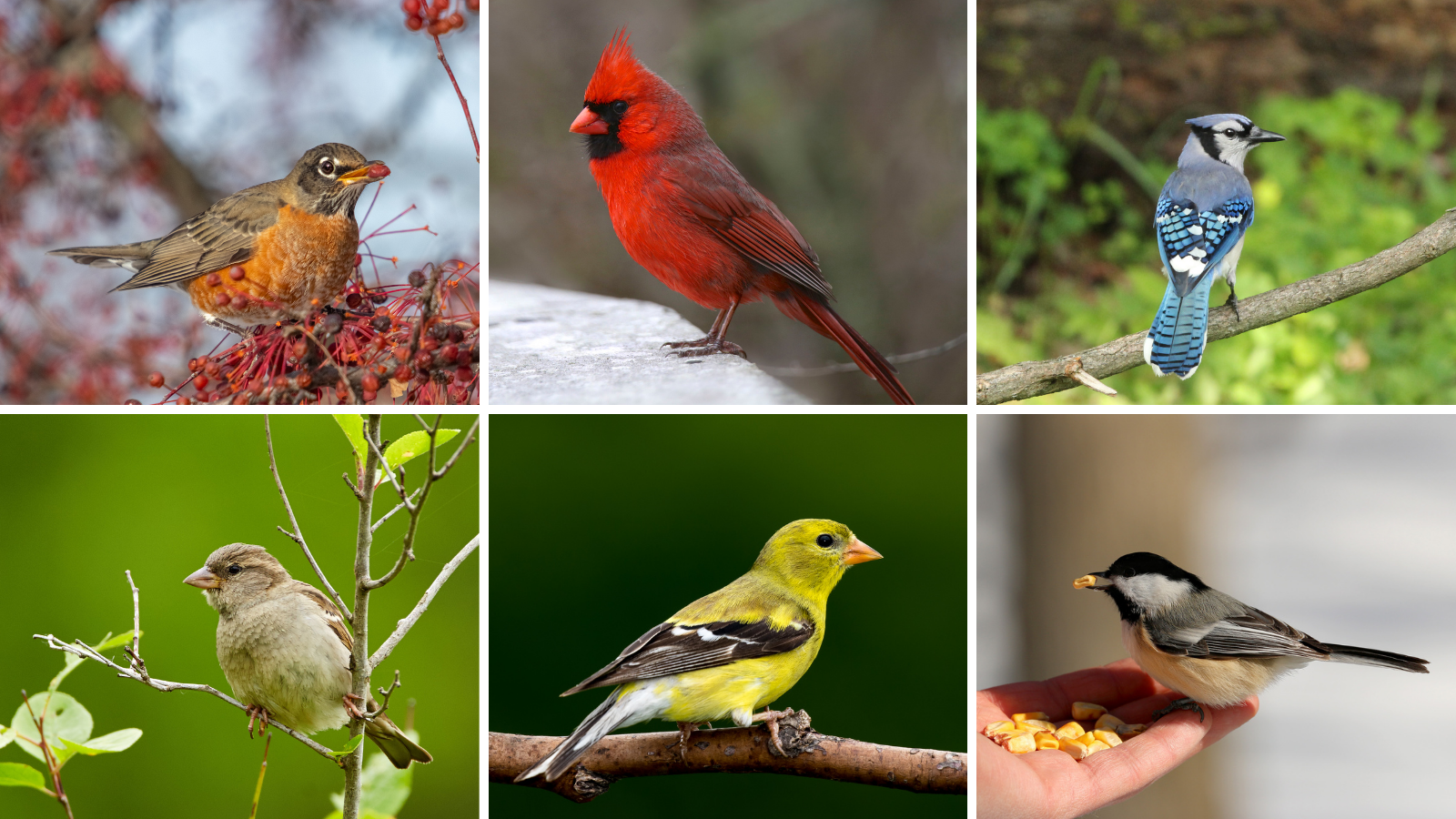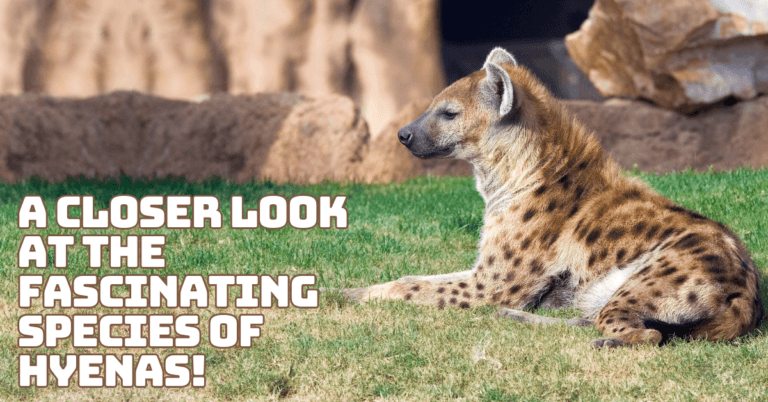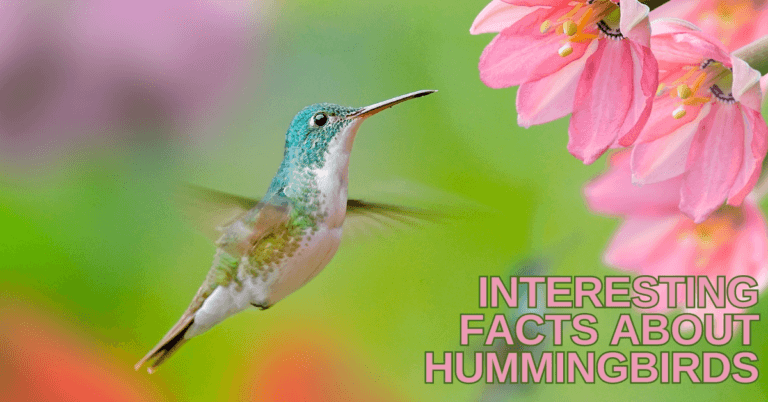Common Backyard Birds In The USA
Common Backyard Birds In The USA
Birdwatching is a popular pastime enjoyed by many nature enthusiasts, and what better place to start than in our backyards?
The United States is home to a rich array of bird species, and with a little attention and patience, you can unlock a world of avian wonders just outside your door.
Whether you reside in a bustling city, suburban neighbourhood, or rural area, you're likely to encounter a variety of feathered visitors gracing your backyard with their vibrant colours, melodic songs, and captivating behaviours.
This article will explore the fascinating world of common backyard birds in the United States.
From the American Robin's enchanting melodies to the Northern Cardinal's striking plumage, we will introduce you to a diverse cast of avian characters that may grace your feeders, perch on your trees, or build nests in your shrubs.
By familiarizing yourself with these feathered friends, you can enhance your appreciation for the natural wonders beyond your window.
What Are Backyard Birds?
“Backyard birds” refers to species commonly found in or near residential areas, particularly near people's homes and immediate surroundings.
These birds are frequently observed in suburban neighbourhoods, urban areas, and sometimes even rural settings, where human habitation and natural habitats intersect.
Backyard birds are known for adapting to human-altered environments, such as gardens, parks, and suburban landscapes.
They have become accustomed to the presence of humans, often frequenting bird feeders, birdbaths, and nesting boxes that people set up in their yards to attract and support them.
Even though backyard bird species may vary based on region and habitat, they often consist of a mix of widely distributed bird species that have successfully adjusted to urban and suburban settings.
These birds are often characterized by their familiarity with people, frequent visibility, and regular human interactions.
Backyard birds play a crucial role in maintaining the balance of ecosystems. They help control insect populations by feeding on pests like mosquitoes, caterpillars, and garden-damaging insects.
Additionally, they aid in pollination by transferring pollen from flower to flower as they forage for nectar. Many migratory backyard birds undertake long-distance journeys between breeding and wintering grounds.
Backyards can serve as important stopover sites for migratory birds, providing them with food, water, and shelter during their arduous journeys.
Backyards provide nesting opportunities for many bird species. Different species have specific requirements for nest placement, materials, and structures.
Providing birdhouses, nesting platforms, or undisturbed natural nesting sites can encourage nesting and breeding activities. Backyard bird feeding is a popular activity that allows people to attract and observe various bird species up close.
Providing appropriate bird feeders and food can attract different species, and birdwatching from the comfort of your home can offer relaxation, educational opportunities, and a deeper connection with nature.
Backyard birdwatching can contribute to citizen science efforts and conservation initiatives.
Observations and data collected by birdwatchers can help track populations, monitor trends, and contribute to scientific research that aids in bird conservation and habitat protection.
Common Backyard Birds In The USA
Welcome to the vibrant world of common backyard birds in the United States! Step outside, and you'll find a symphony of melodies, a kaleidoscope of colours, and a captivating array of avian life beyond your doorstep.
From the elegant American Robin to the spirited Northern Cardinal, these feathered inhabitants bring joy and wonder to our everyday lives.
People often encounter many common backyard birds in the United States. Here are some of the most frequently seen species:
1. American Robin (Turdus migratorius)
The American Robin (Turdus migratorius) is a beloved and easily recognizable backyard bird in the United States.
Its distinctive orange-red breast, grayish-brown back, and white eye-ring add colour to gardens and lawns.
These birds are known for their melodious and cheerful song, which is often one of the first sounds of spring. American Robins are excellent foragers, hopping across lawns for earthworms, insects, and berries.
They can also be seen perched in trees, bobbing their heads to locate prey. During the breeding season, American Robins construct cup-shaped nests made of mud, grass, and twigs in trees, ledges, or man-made structures.
They are highly adaptable and can be found in various habitats, from woodlands to urban areas. As true harbingers of spring, the presence of American Robins in your backyard is a sure sign that warmer days have arrived.
2. Northern Cardinal (Cardinalis cardinalis)
The Northern Cardinal (Cardinalis cardinalis) is a striking and highly recognizable backyard bird in the United States.
The male Northern Cardinal is a true showstopper known for its vibrant red plumage, crest, and black face mask.
Females, on the other hand, sport a more subdued blend of tan and reddish-brown feathers.
These birds are frequent visitors to gardens, backyards, and bird feeders, adding colour to the landscape.
One of the notable features of the Northern Cardinal is its beautiful song. Males sing a variety of melodic whistled phrases, often repeating distinctive patterns that vary between individuals.
Their rich, clear songs can be heard yearly and are especially prominent during the breeding season. Northern Cardinals are primarily seed-eaters, with a preference for sunflower seeds.
They also consume fruits, berries, and insects, making them adaptable foragers. Their strong bills allow them to crack open seeds and extract food from various sources.
Cardinals are known to be frequent visitors to bird feeders, where they can be seen perched and feeding, often bringing their bright colours and cheerful presence to backyard settings.
3. House Sparrow (Passer domesticus)
The House Sparrow (Passer domesticus) is a small and adaptable bird commonly found in urban and suburban areas throughout the United States.
With its brownish-gray plumage, rounded body, and short beak, the House Sparrow is easily recognizable.
Male House Sparrows have a black bib on their throat and a chestnut-coloured back, while females display a more subdued brown plumage.
One of the defining characteristics of House Sparrows is their vocalizations. They produce a variety of chirping calls, often heard in busy urban settings.
Their calls serve various purposes, including communication with other sparrows, establishing territories, and attracting mates.
These lively chirps and cheeps create a familiar soundtrack in neighbourhoods and add a touch of nature to the urban environment.
House Sparrows are highly adaptable and opportunistic feeders. Seeds, grains, insects, and leftover human food are all part of their varied diet.
Their ability to exploit food resources in human-dominated landscapes has contributed to their successful establishment in urban areas. House Sparrows frequently scavenge around outdoor dining areas, parks, and garbage bins.
When it comes to nesting, House Sparrows display communal and colonial behaviours. They build their nests in cavities like tree holes and crevices or man-made structures like buildings and birdhouses.
The male selects potential nesting sites and attracts females by singing and performing courtship displays. Once a pair forms, they construct a twigs, grass, and feathers nest.
4. Mourning Dove (Zenaida macroura)
The Mourning Dove (Zenaida macroura) is a gentle and graceful bird widespread throughout the United States. The Mourning Dove is easily recognized with its slender body, long tail, and soft gray plumage.
They are often seen perched on telephone wires or rooftops, and their distinctive silhouette is a familiar sight in both urban and rural areas.
One of the most recognizable features of the Mourning Dove is its soothing cooing call. The male calls a gentle, mournful “coo-AH, coo, coo,” which gives the bird its name.
This soft and melodic call can often be heard in the early morning or evening, adding a peaceful ambiance to outdoor spaces. Mourning Doves are ground feeders and have a preference for seeds, particularly those of grasses and weeds.
They can often be observed foraging on the ground, pecking at seeds or grains, or drinking water from shallow puddles or birdbaths.
Their ability to feed on various seeds and grains makes them adaptable to various habitats, including gardens, fields, and parks.
5. Blue Jay (Cyanocitta cristata)
The Blue Jay (Cyanocitta cristata) is a striking and charismatic backyard bird instantly recognizable with its vibrant blue plumage, crest, and black collar.
These bold and beautiful birds are known for their raucous calls, often heard echoing through forests and suburban areas.
Blue Jays have various vocalizations, including their well-known “jay-jay” call, harsh screeches, and mimicry of other bird species.
Aside from their vocal prowess, Blue Jays are also known for their intelligence and curiosity. They are highly adaptable and can be found in various habitats, including woodlands, parks, and backyards.
Their keen eyesight and quick movements make them excellent foragers as they search for acorns, nuts, seeds, fruits, and insects.
Blue Jays are also known to cache food for later consumption, with their excellent memory enabling them to retrieve hidden food stores.
Breeding season displays are an impressive sight when it comes to Blue Jays. Males engage in elaborate courtship rituals, including aerial acrobatics, head bobbing, and exchanging food with the female.
Once a pair forms, they build a cup-shaped nest made of twigs, grass, and sometimes even paper or other materials they find nearby. Blue Jays are protective parents, fiercely defending their nests and young from potential threats.
6. American Goldfinch (Spinus tristis)
The American Goldfinch (Spinus tristis) is a delightful and vibrant backyard bird that brings sunshine to any feeding area.
These small finches are best known for their striking yellow plumage, brightening gardens and meadows.
During the breeding season, male American Goldfinches showcase their brightest yellow feathers, contrasting with their black wings and cap, while females exhibit a more subdued yellowish-green coloration.
One of the fascinating aspects of American Goldfinches is their dietary preference for seeds.
They have a specialized bill designed for extracting seeds from plants, and they primarily feed on the seeds of thistles, sunflowers, and other plants with small, soft seeds.
Their reliance on seeds attracts them to feeders containing nyjer (thistle) seeds or sunflower seeds.
During the breeding season, American Goldfinches undergo a dramatic moult, where the males shed their bright yellow feathers and instead sport a more olive-brown plumage.
This change in appearance is a remarkable adaptation that allows them to blend in with their surroundings and avoid predation while nesting. Once the breeding season is over, they moult again, returning to their vibrant yellow plumage.
7. Black-Capped Chickadee (Poecile atricapillus)
The Black-capped Chickadee (Poecile atricapillus) is a beloved and charismatic backyard bird that captures the hearts of bird enthusiasts with its charming appearance and cheerful personality.
The Black-capped Chickadee is easily recognized with its small, round body and distinctive black cap and bib. One of its most endearing features is its call, a series of whistled notes that sound like “chick-a-dee-dee-dee.”
This vocalization serves as a way for chickadees to communicate with one another and alert their flock to potential dangers.
Black-capped Chickadees are highly active and acrobatic birds, often seen flitting between branches, hanging upside-down, or hovering as they search for insects, seeds, and berries.
Their agility and dexterity allow them to extract food from tree crevices or pluck tiny insects from foliage. They frequently stop by backyard feeders and eat suet, peanuts, and sunflower seeds with little problem.
Black-capped Chickadees are cavity nesters, excavating holes in trees or utilizing existing cavities for their nests. They line their nests with soft materials such as moss, feathers, and fur to create a cozy environment for their eggs and young.
Interestingly, chickadees are known for roosting together in tree cavities during cold winter nights, using their collective body heat to keep warm.
8. American Crow (Corvus brachyrhynchos)
The American Crow (Corvus brachyrhynchos) is a large, intelligent backyard bird that commands attention with its glossy black plumage and distinctive cawing calls.
These birds are larger than most backyard species, with a wingspan of about three feet. American Crows are highly adaptable and can be found in various habitats, including urban areas, forests, and agricultural fields.
One of the defining characteristics of American Crows is their vocal repertoire. They emit various calls, with their most well-known call being a harsh and guttural “caw.”
These vocalizations serve multiple purposes, including communication within the crow community, warning of potential threats, and establishing territories.
Their calls can be heard throughout the day as they communicate with one another and convey information about food sources or potential dangers.
American Crows are highly social birds, often seen in small to large groups, known as “murders.”
These communal gatherings serve several functions, including increased protection against predators, cooperative foraging, and sharing information about food sources.
They are known to be highly intelligent and exhibit problem-solving abilities, making them one of the most intelligent bird species.
In terms of diet, American Crows are omnivorous and opportunistic feeders. They consume various food, including insects, small mammals, birds' eggs and nestlings, seeds, fruits, and carrion.
They are often seen scavenging on roadkill or visiting garbage dumps searching for food. Their adaptability to different food sources has contributed to their ability to thrive in various environments.
While some people may view American Crows as noisy or opportunistic, these birds play important ecological roles.
They help control populations of insects and small mammals, and their scavenging habits contribute to the efficient decomposition of carrion.
Their intelligence, adaptability, and complex social behaviour make them an intriguing and often misunderstood species.
9. House Finch (Haemorhous mexicanus)
The House Finch is a delightful and adaptable bird native to North America. With its vibrant red or orange-red plumage, the male House Finch adds a splash of colour to our landscapes, while the females display more subtle brownish-gray tones.
This medium-sized finch has gracefully expanded its range, colonizing both the western and eastern parts of the continent. House Finches are highly versatile and can be found in various habitats, from urban areas to open woodlands.
They are renowned visitors to backyard bird feeders, where their specialized beaks deftly crack open seeds, creating a delightful spectacle for birdwatchers.
Breeding in spring and summer, they construct cup-shaped nests in shrubs, trees, or ledges, often close to human settlements.
Their melodic songs and cheerful calls fill the air, making them welcome companions for nature enthusiasts across North America.
With their charming presence and adaptability, House Finches are a testament to the incredible ability of wildlife to thrive alongside humans.
10. Red-Winged Blackbird (Agelaius phoeniceus)
The Red-winged Blackbird is a captivating and common bird species across North America. The male Red-winged Blackbird is a striking sight with its glossy black plumage and vibrant red and yellow shoulder patches, which it proudly displays during courtship and territorial displays.
These colourful markings are a hallmark of the species and make them easily distinguishable. They are often spotted in and around marshes, wetlands, and other aquatic habitats, building their nests among cattails and reeds.
With their distinctive, melodious song, the male Red-winged Blackbirds stake out their territories and attract mates during the breeding season.
Conversely, females have more subdued brownish plumage, providing them with excellent camouflage to protect their nests.
These social birds often gather in large flocks outside the breeding season, creating a captivating and lively spectacle for birdwatchers.
The Red-winged Blackbird's adaptability to various environments, striking appearance, and captivating behaviours make it a beloved and essential part of the North American avian landscape.
Conclusion
In conclusion, the United States is home to diverse backyard birds that bring joy, beauty, and vitality to our outdoor spaces.
From the melodious songs of the American Robin to the vibrant plumage of the Northern Cardinal, each species adds its unique charm to the natural tapestry of our surroundings.
Observing and appreciating these birds in our backyards brings aesthetic pleasure and offers scientific observation and ecological understanding opportunities.
Backyard birds play vital roles in maintaining a balanced ecosystem through their feeding habits, nesting behaviours, and interactions with other species.
They contribute to pollination, seed dispersal, and pest control, helping maintain our environment's health and biodiversity.
I trust you enjoyed this article on Common Backyard Birds In The USA. Please stay tuned for more blog posts shortly. Take care!
JeannetteZ
>>>Please click here to read my all-inclusive article about Why Is Wildlife Important And How Can We Protect It<<<
>>>Are you interested in Natural Healing And Stress Relief through Herbs? Please click here for my #1 Recommendation<<<
Your Opinion Is Important To Me
Do you have thoughts, ideas, or questions? I would love to hear from you. Please leave your questions, experiences, and remarks about the Common Backyard Birds In The USA article in the comments below. You can also email me at Jeannette@Close-To-Nature.org.
Disclosure
This post may contain affiliate links. As an Amazon Associate and other affiliate programs, I earn from qualifying purchases at no extra cost to you. Please read my full affiliate disclosure.
You might also enjoy these blog posts:
Interesting Yellow-Bellied Sapsucker Facts
Interesting American Redstart Facts
How Natural Calm Gummies Reduce Stress
Best Holistic Self-Care Practices



















